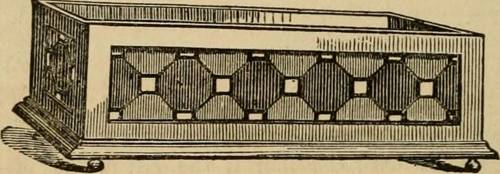
FAQ About Indoor Plant Dechlorination Techniques

Why is it important to dechlorinate water for indoor plants?
Chlorine is commonly added to tap water for its disinfectant properties, but it can be harmful to many types of indoor plants. Chlorine can damage the roots, harm beneficial soil microorganisms, and adversely affect the plant's overall health and growth. By removing chlorine from water before use, plants can absorb necessary nutrients more efficiently, leading to healthier growth.

What are the common methods to dechlorinate tap water for plants?
There are several methods to dechlorinate tap water for plants, including aeration, where water is left to stand for 24-48 hours while the chlorine naturally evaporates; filtration, using carbon-based filters to remove chlorine; and chemical treatments, such as using dechlorination tablets or liquid drops that neutralize chlorine instantly.

How effective is aeration at removing chlorine from water?
Aeration is a simple and effective method to remove chlorine from water. By letting the water sit out in an open container for 24 to 48 hours, the chlorine will naturally dissipate. This method is effective for chlorine but not for chloramine, which is a more stable compound. For chloramine, other methods like filtration or chemical neutralizers are recommended.

Can boiling water remove chlorine for plant use?
Boiling water can effectively remove chlorine, as the heat speeds up the evaporation process. Boiling for about 15-20 minutes typically removes most of the chlorine. However, like aeration, this method does not effectively remove chloramine, so other methods may be necessary in areas where chloramine is used.

How do carbon filters work to remove chlorine from water?
Carbon filters remove chlorine through a process called adsorption, where chlorine molecules bind to the surface of the carbon material in the filter. As water passes through the filter, up to 99% of the chlorine can be removed. This method is efficient and also helps improve the taste and odor of the water, making it suitable for plant use.

Are chemical dechlorination products safe for plants?
Chemical dechlorination products, such as sodium thiosulfate or potassium metabisulfite, are generally safe for plants when used according to the manufacturer's instructions. These chemicals neutralize chlorine instantly and are particularly useful when you need to prepare water quickly for feeding plants.

What is the difference between chlorine and chloramine in tap water?
Chlorine is a chemical element used for disinfection, but it evaporates relatively quickly from water. Chloramine, on the other hand, is a combination of chlorine and ammonia. It is more stable and remains in water longer, which can be more challenging to remove. Understanding which compound is in your tap water can help in choosing the right dechlorination method.

How can I test if my tap water has chlorine or chloramine?
To test for chlorine or chloramine in tap water, you can use a water testing kit available from garden centers or online. These kits usually include test strips that change color to indicate the presence of chlorine or chloramine. Alternatively, local water quality reports often list which disinfectants are used.

Does distilled water require dechlorination for indoor plants?
No, distilled water does not require dechlorination as the distillation process removes chlorine and other impurities. Distilled water is excellent for indoor plants, especially those sensitive to chlorine or other tap water additives, providing them with clean and safe hydration.

Can rainwater be used directly for indoor plants?
Yes, rainwater can be used directly for indoor plants. It is naturally free from chlorine and other chemicals typically found in tap water. Rainwater is often preferred by gardeners because it is more akin to what plants receive in their natural environment, promoting healthier growth.

Is using bottled water a good option for dechlorination?
Bottled water may not always be the best option as it can contain added minerals or undergo treatment processes that add chlorine or chloramine. If you choose bottled water, ensure it is labeled as natural spring or mineral water with no added chemicals to avoid potential plant harm.

Can vinegar be used to dechlorinate water?
Vinegar is not an effective method for dechlorination. It can alter the pH level of the water without effectively removing chlorine or chloramine. Stick to proven methods like filtration, aeration, or chemical treatments for effective dechlorination.

How long should I let tap water sit to remove chlorine before using on plants?
To dechlorinate water by letting it sit, leave the water in an open container for 24 to 48 hours. During this time, the chlorine will naturally evaporate. Ensure the container is wide enough to maximize the water's surface area, which helps accelerate the evaporation process.

Can adding baking soda remove chlorine from water?
Adding baking soda to water does not remove chlorine. Some people believe that it can neutralize acidity, but it does not affect chlorine levels. For removing chlorine, rely on methods like letting water sit, carbon filtration, or using dechlorination chemicals.

Is activated charcoal effective in dechlorinating water for plants?
Yes, activated charcoal is very effective in dechlorinating water. It works by adsorbing chlorine molecules as water passes through it. Many water filter systems use activated charcoal because of its efficiency in removing chlorine and improving water quality for plants and general use.

What are the advantages of using a water filter pitcher for dechlorination?
Water filter pitchers are convenient, affordable, and easy to use. They often contain activated carbon filters that can effectively remove chlorine and other impurities. This makes them an excellent option for providing dechlorinated water for indoor plants without the need for complex setups or waiting times.

How do commercial dechlorination tablets work?
Commercial dechlorination tablets, often used for aquariums, neutralize chlorine by chemically reacting with it. Ingredients like sodium thiosulfate are common in these tablets, which bind with chlorine to render it harmless. They provide a quick and easy solution, especially when immediate water treatment is needed.

Does letting tap water boil longer enhance dechlorination?
Letting tap water boil longer can enhance the dechlorination process as the heat accelerates chlorine evaporation. However, for chloramine, boiling is not sufficient, and other methods need to be applied. Boil water for at least 15 minutes to remove chlorine effectively.

Can sunlight exposure help dechlorinate water?
Yes, exposure to sunlight can help dechlorinate water. UV light from the sun accelerates the breakdown of chlorine. Leaving water in clear containers exposed to direct sunlight for several hours can expedite the evaporation of chlorine. However, this method is less effective for chloramine.
